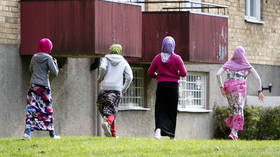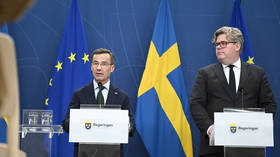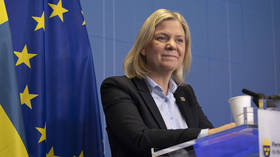EU state could pay its own citizens to leave

Sweden could broaden a program under which new citizens who are struggling to integrate into society are encouraged to leave, according to a proposal submitted to Immigration Minister Maria Malmer Stenergard.
The so-called “voluntary repatriation” scheme currently in place in Sweden offers refugees and migrants a one-time payment of 10,000 Swedish krona (approximately $960) per adult and 5,000 per child, plus travel costs, if they agree to leave the country.
However, a commission of inquiry has recommended expanding this program to include not only holders of temporary or permanent residence permits – but also naturalized Swedish citizens and their family members.
The report, submitted this week, also suggested implementing a repayment requirement for those who received the cash but did not leave. At the same time, it rejected a proposal to raise the amount, due to concerns that it might send a “wrong signal” to migrants that they are “not welcome” in Sweden.
“The investigation’s proposal will now be analyzed at the Ministry of Justice,” Minister of Migration Maria Malmer Stenergard wrote on X (formerly Twitter), acknowledging that the current program has been ineffective, with very few people aware of the available support.
Sweden’s foreign-born population has doubled in the last two decades and, as of 2023, amounts to over 2.15 million, which is more than a fifth of the country’s total. However, after receiving a record number of immigrants in 2015, Stockholm imposed restrictions that made the country’s immigration policy one of the toughest in Europe.
As a result, last year, for the first time in over five decades, more people left Sweden than arrived, according to Stenergard. “We see that many emigrate even without receiving support,” she said. “Recently, I presented figures showing that last year we saw net emigration for the first time in over 50 years.”
“For those who have not integrated into Swedish society, return migration can be a way to create a better life for themselves,” she added. “It is one of several ways to achieve sustainable immigration that strengthens integration and reduces exclusion.”














